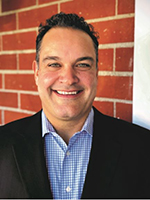After managing major workforce shifts during the pandemic, HR is now expected to manage change more rapidly than ever.

By Brenan German, President at Bright Talent
In the last two years, HR leaders in manufacturing companies have been asked to enact change more rapidly than ever before, with a level of complexity that rivals – or surpasses – any other industry on the planet. Virtually overnight, many workplaces went from a fully in-person environment to one that was divided, with workers in manufacturing and fulfillment continuing to work onsite – with entirely new processes for PPE, virus testing, contact tracing, vaccination, etc. – while executives and other information workers worked from home.
Change management is nothing new. But rapid change management is. HR’s success in these endeavors has set high expectations. And today, major workplace and practice changes that used to take months or even years to do in a programmatic and organized way are now expected to be done at warp speed.
Based on our hundreds of engagements with companies across different industries, here are five tried-and-true HR management best practices for driving rapid change initiatives within any organization more quickly and effectively.
1. Define your objectives to garner buy-in
Objectives must consider the wider business impact to ensure that the changes align with employee performance as well as business performance and secure C-suite and employee buy-in. A clear objective should answer 4 questions:
2. Build a team to enact change
Every successful rapid-change management team should include the following structure:
3. Plan, plan and stick to the plan
To help ensure success, follow these four stages of planning, while closely monitoring timelines and deliverables along the way:
4. Communicate clearly to initiate change
The pandemic was high visibility, but usually the project team must “sell” it by communicating the importance of the project, how it’s going to happen, and the benefits the company will receive.
5. Build off your blueprint through training
It’s particularly important that the leaders of change create and implement training programs to ensure that employees are able to adapt to the changes.

Brenan German is President at Bright Talent, Inc., a boutique HR Consulting firm providing outsourced HR consulting and recruiting services for organizations ranging from Fortune 500 companies to fast-growing startups. LinkedIn Reach Brenan at 714–838–0995 or hello@brighttalent.com.
In this episode, I sat down with Beejan Giga, Director | Partner and Caleb Emerson, Senior Results Manager at Carpedia International. We discussed the insights behind their recent Industry Today article, “Thinking Three Moves Ahead” and together we explored how manufacturers can plan more strategically, align with their suppliers, and build the operational discipline needed to support intentional, sustainable growth. It was a conversation packed with practical perspectives on navigating a fast-changing industry landscape.